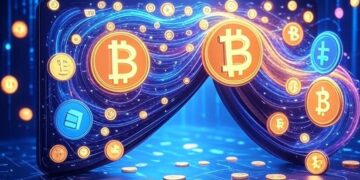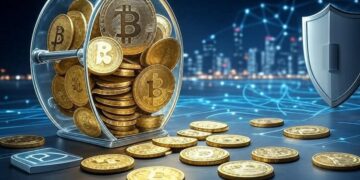The blockchain ecosystem has shown great promise to disrupt numerous industries, and NFT Art and NFT Artwork have been buzzwords in recent years as a result. One of the most exciting eras in recent blockchain and cryptocurrency history is now synonymous with these two names. There is currently a multimillion-dollar daily trade in NFT art financing. Businesses in many parts of the world are increasingly investing in NFT Artworks like they would in traditional fine art. For many thousand dollars worth of Ethereum (ETH), for instance, VISA purchased an NFT Artwork.
Furthermore, one of the most well-known footballers in the world, Leonel Messi, has unveiled the Messiverse, a one-of-a-kind NFT crypto art collection. Although these two works account for only a tiny fraction of the market, the daily volume of crypto art transactions on all platforms totals millions of dollars.
In this setting, artists prove they can produce high-quality work without relying on antiquated systems that might be difficult for certain people to use. Blockchain technology and the most widely used blockchain networks have allowed artists to access a wider audience.
Several global corporations and public people have committed to NFT Art, ensuring its continued existence. Learn the ins and outs of NFT Art, the history of its explosive growth, and how RSK is facilitating the participation of artists and businesses in this dynamic new ecosystem.
What is NFT Art?
An NFT Art token serves as a digital representation of a unique work of art. This creative work might exist in the physical world or as a digital file formatted as a ‘jpg.’ NFT is an abbreviation for “non-fungible token,” which may describe many things other than works of art.
NFT & Blockchain Technology
No matter where they are in the globe, anyone may be an artist and sell their original works of art online. The growth of blockchain technology is what made this possible. Although this is a defining feature of NFT artwork, it is far from the only one. NFT Art is also unique in other ways, most of which have to do with who owns it. Before the advent and widespread use of blockchain technology, digital artists had the ability to produce works, but they had no way to establish their ownership over those works. Prospective purchasers were not going to get any assistance in acquiring title to this asset.
Before the advent of NFTs, artists faced significant challenges due to the absence of a standard method for selling digital works of art. There was almost nothing that creators could use to establish legal ownership of their work. As a result, market growth was stunted.
Using blockchain technology, artists may create a new coin that is untraceable, verifiable, and simple to trade. There is a growing demand for NFT coins, thus they are currently worthwhile. As a result, businesses and artists alike are taking part in a burgeoning industry that has the potential to revolutionize how digital art is managed.
Cybersecurity Of Blockchain Technology
Let’s not forget that information stored using blockchain technology is inherently safe. These distributed ledger networks are both difficult to attack and useful for data recording due to their decentralized nature. As a result, creatives no longer need to worry about proving their copyright before they may produce, sell, and profit from their work. Blockchain technology’s value to digital art is one of NFT Art’s defining characteristics. It was obviously hard for creative people to have their works seen and appreciated.
Business Insider reports that the value of the NFT Art market has increased to over $490 million, an increase of over 800% since the beginning of 2021. This shows the magnitude of its effect on the Bitcoin market. These estimates may even be conservative since additional projects have lately emerged. NFT Art has a lot going for it, but if it wants to keep expanding, it will have to overcome a few obstacles. There is little doubt that NFT Art is here to stay.
The Development of Digital Art
Painting, canvas, and Sculpture are some of the oldest and most established art forms. However, a seismic change has occurred with the advent of the digital era, expanding the limits of creative expression in previously unimaginable ways. As a result of technological advancements, the creative process has been catapulted into a new dimension.
Imagine a future when artworks are no longer static museum exhibits but active online community participants. The emergence of digital art as a new and exciting form of creative expression has captivated artists and viewers alike. The time when artists could use their hands and a few basic supplies has passed. These days, digital artists use high-powered computers, iPads, and even VR goggles to produce magnificent creations that live only online. They allow artists to seamlessly combine reality and fantasy, giving life to their dreams with pinpoint accuracy and boundless originality.
Technology has evolved into an artist’s best friend, opening new avenues of expression. Digital artists have discovered a world of endless possibility and inventiveness because of the convergence of art and technology. The sheer amount of options available is one of the most eye-catching benefits of digital art. Modern digital technology has made it possible for artists to combine classic methods with experimental new media. By bringing together elements from many cultures, artists are able to produce works that go beyond categorization. You can trade a variety of NFTs and cryptos using auto bots like Quantum Ai.
What the NFTs Mean for the Digital Art Market?
Non-Fungible Tokens (NFTs) are new phenomena that have swept the art world in recent years. These blockchain-based digital assets have altered conventional notions of art ownership and value. An NFT fundamentally stands for a single item of digital material such as an image, song, or movie. In contrast to fungible and interchangeable cryptocurrencies like Bitcoin and Ethereum, each NFT has its own unique properties. Because of its one-of-a-kind qualities and the immutability of blockchain technology, the digital art industry has recently seen a surge in attention and investment.
NFTs let creators of digital works earn money from such works without going via middlemen. Historically, issues of exclusivity and scarcity have plagued digital artwork. The ability to market original works as such increases their perceived worth and scarcity.
NFTs may be able to fund the work of digital artists sustainably. It gives them a way to make money reliably and capitalize on their work’s rising market worth over time. It questions the validity of property rights and gives creators a fresh opportunity to gain popularity and financial backing. But there are difficulties in both the digital art industry and NFTs. Because it requires so much power to operate, blockchain technology has been criticized for its potential effect on the environment.
The Key Point
Whether or not you put stock in digital artwork and collectables, the technology and the way people actually behave point to a sizable untapped market. With NFTs, digital assets may be collected and invested in, just like their physical counterparts. Digital artwork has opened up new opportunities for artists and designers to make money while also fuelling a strong secondary market for collectors.









